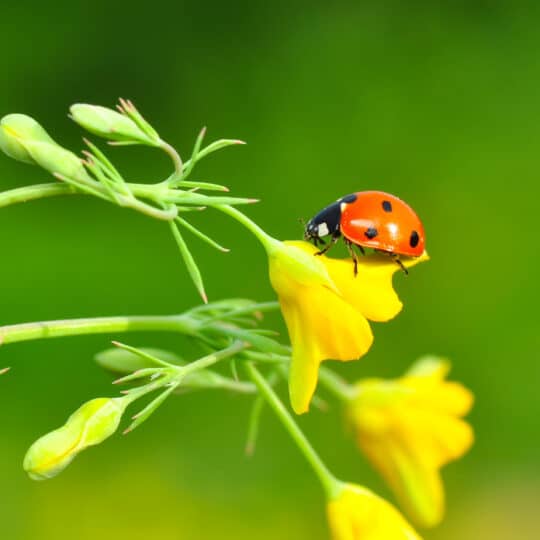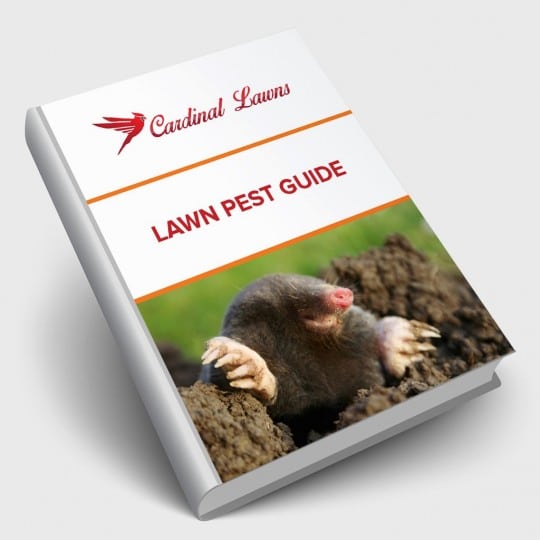Common Beneficial Lawn Bugs
How to Welcome Them to Your Garden
Posted
May 19, 2022

From giant bite marks in leaves to plants covered in a thin layer of web, it’s easy to see the signs of harmful plant pests. But are there any insects that you want in your garden? Yes. Here are some of the most common beneficial lawn bugs and why you want them around.
Welcoming Bugs to Your Garden
Did you know that one way to get rid of harmful plant pests is to enlist the help of beneficial lawn bugs? It’s true. Some insects are natural predators or parasites for pests you’d rather not have in your garden. They either consume their prey or lay their eggs on them so their offspring can dine once they hatch.
Inviting these bugs to your yard is a more natural pest control option. All it takes is some nectar, water, and a protective area to make these bugs feel at home. They will thank you by ridding your yard of undesirable insects and saving you from having to spread chemical pesticides.
Common Beneficial Lawn Bugs
When building your beneficial bug army, round up the following recruits:
Spined Soldier Bugs. Often mistaken for stinkbugs, these critters have a shield-shaped body with pointed shoulders and a black mark on their wing. They also eat caterpillars, grubs, and armyworms.
Lady Beetles. Also known as ladybugs. You’ve seen their tiny red-spotted body, but you may not have noticed their equally lethal, gray-colored larva that feeds on aphids and other small soft-bodied insects.
Ground Beetles. These nocturnal predators feed on grubs, caterpillars, armyworms, and cutworms. You may see them hiding under stones during the day, but they quickly move their flat dark bodies to the shelter of garden debris.
Mantises. These long, green or brown, peaceful-looking creatures pray for insects of any kind (even helpful ones or their own young).
Lacewings. You may recognize their clear, veiny adult wings, but it’s the larvae that feast on aphids, caterpillar eggs, and young leafhoppers.
Braconid Wasps. These are one of the species that deposit eggs in or near their prey—including aphids, beetles, and caterpillars—so that the hatchlings don’t go hungry.
While you may not wish to add more insects to your yard or garden, it’s inevitable to come across bugs of some kind in the outdoors, so why not put them to work.
Steps to Setting Up a Welcoming Space
Now that you know which bugs are beneficial and why, here’s what you can do to attract them to your yard.
- Avoid pesticides. If it doesn’t kill the insects, it will poison their food.
- Provide food. Incorporate different pollen and nectar sources in your garden. Include common herbs like fennel, dill, spearmint, caraway, and coriander. Plant a patch of wildflowers and other flowering plants, either annuals or perennials.
- Offer water. Insects get thirsty too, and adding some small pans filled with rocks that will collect rainwater is enough to help the bugs.
- Plant protection. Insects need a place to hide and rest, and they typically find shrubs, vines, and evergreens the perfect place to overwinter.
You may be following these steps already, so now you know you’re also doing your part to help welcome beneficial bugs. For more tips on how to make your yard a better place for you and bugs, contact the lawn experts at Cardinal Lawns today.

Download Your FREE Lawn Pest Guide
Pests become most prevalent during the heat and humidity of summer. Take some time to learn about the signs of infestations before any damage can be caused to your landscape. This handy guide will teach you how to spot common lawn pests and how to keep them from causing harm to you and your property.